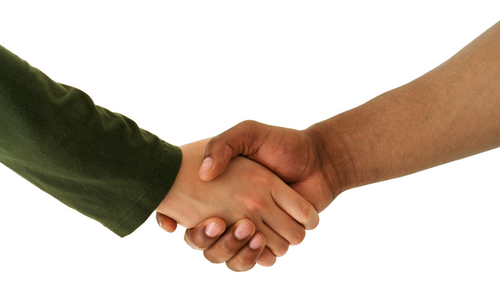
For generations, retailers and brands have partnered to help boost awareness and sales. While some partnerships go together like peanut butter and jelly, others have gone together like steak and jelly. (In other words, not so nicely.)
Take, for instance, Lands End’s partnership with GQ magazine. While the idea of a complimentary magazine subscription seems like a fool-proof idea, it ended up backfiring, as many customers who received the magazine were in fact students!
Sure, Lands End CEO and President Edgar Huber quickly addressed customer feedback and admitted the error, but this example shows how a harmless partnership can quickly go awry.
Below, the RTP editors share their opinions on successful, and not-so-successful, brand-retail partnerships:
Debbie Hauss, Editor-in-Chief: The coffee-books partnership is the ideal setup. Being able to sit down with a cup of coffee while perusing the latest best-sellers can be a relaxing oasis for those of us who still like to crack open a real book. Barnes and Noble has been able to maintain its attraction in some ways because of the coffee connection. High school students will gather in a store to study over a latte; moms and young kids will meet up for hot cocoa and espresso; and retirees can meet up to chat over their favorite novels. A jumping off point for Starbucks, the Barnes and Noble partnership has led to the coffee retailer opening up pop-up shops in other retail locations, such as supermarkets and department stores.
Alicia Fiorletta, Senior Editor: I always appreciate when retailers try to turn their brands into lifestyles. Experiential marketing is one way to do that, and brand partnerships play a key role in making these initiatives successful. For instance, a while back I visited a pop-up shop opened by jewelry eTailer BaubleBar. It was the opening night, and the store was buzzing with excitement. What added to the fun and flair of the experience was a partnership with Godiva. Representatives set up a bar and served Godiva chocolates and branded drinks the entire night. It turned the pop-up store into a swanky cocktail party and really encouraged shoppers to stick around and browse longer. If that’s not successful, I don’t know what is!
Kim Zimmermann, Managing Editor: In states where beer, wine and spirits can be purchased in supermarkets, there have been a number of successful partnerships between retailers and brands.Some of the more successful partnerships I’ve seen include everything from Super Bowl party packages to upscale recipes pairing wine and ingredients for a romantic dinner on Valentine’s Day. The trick is, I think, is that the consumer has to get something unique out of partnership for it to attract attention.
Rob Fee, Managing Editor: I’ve seen and experienced a lot of benefit in partnerships initiated by mobile device makers and cellular providers. I bought my first Samsung Galaxy device about two years ago, and since then, the company continually offers up free content to me — including HD movies and the free Jay-Z album offer that received a lot of attention last year. The savviest thing the company did, though, was offer me 50 GB worth of Dropbox space for two years. Pretty useful for backing up photos taken on the go and a smart play by Dropbox. Here’s why: My time with the free space is about to conclude, but I’m now used to the convenience the service offers. Chances are high that I’ll now become a paying customer of the service. This partnership created a grateful customer and a clear path for Dropbox to acquire new business.
Glenn Taylor, Associate Editor: Sometimes retailers like to build partners with each other, particularly when a discount department chain looks to sell higher end clothing that usually isn’t found in their stores. We saw this fairly recently when Target started selling Neiman Marcus clothing and products around the 2012 holiday season. The hype leading into the release was heavy, even including a launch party. However, all the talk over the collaboration turned out to be a dud once the product line was introduced on Dec. 1. While the clothing wasn’t expensive to the average Neiman Marcus audience, Target customers weren’t buying the products, illustrating that cross-branding doesn’t always work, even if it occurs in a small dose.
Brian Anderson, Associate Editor: Google is known as a tech company, and the company stepped into new territory when it began working on its wearable computer: Google Glass. A problem that Google is facing when it comes to Glass is that it’s more than just a piece of tech; Google Glass is also a fashion accessory. That’s why Google made a deal with Luxottica – a luxury eyewear retailer with brands such as Oakley, Ray-Ban and Persol – back in March with the intention to have Google Glass integrated into Luxottica products and sold through its retail stores. This partnership will be vital since it will help Google appease fashion-centric customers while also appeasing to the customers that are more tech-savvy.
Have you seen a successful retail-brand partnership? Share your experience in the comments section below!






